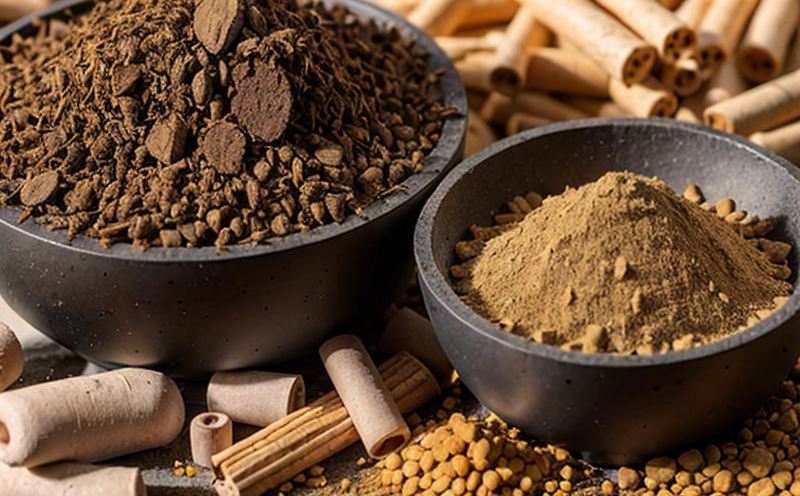ASTM D1102 Ash Content Testing in Wood
The ASTM D1102 standard method is essential for determining the ash content of wood, providing critical insights into the quality and composition of biomass resources. This testing protocol is widely used by industries involved in renewable energy generation to ensure that the materials meet specified standards before being utilized in bioenergy production processes.
Wood, a key component in many biomass applications, contains various components such as cellulose, hemicellulose, lignin, and other organic compounds. During pyrolysis or combustion, these elements contribute to the formation of ash—a solid residue left after burning. Accurate measurement of ash content is crucial for optimizing bioenergy production processes, enhancing efficiency, and reducing waste.
The ASTM D1102 method involves heating a sample in an oxygen-free environment at 550°C ± 25°C until only the non-combustible residue remains. This process helps isolate ash from volatile constituents like water and other gases. The resulting mass is then compared to the original sample weight, providing a percentage of ash content.
Understanding ash content is particularly important for several reasons:
- Efficiency Optimization: High ash content can lead to increased furnace temperatures and energy consumption during bioenergy production. By knowing the ash content beforehand, operators can adjust their processes accordingly.
- Material Sorting: Knowing the ash content allows for better sorting of wood samples based on quality, ensuring that only suitable materials are used in bioenergy plants.
- Environmental Impact Assessment: Lower ash content indicates higher potential energy efficiency and reduced emissions from incineration processes. This makes ASTM D1102 an important tool in assessing environmental sustainability.
In summary, ASTM D1102 is a vital technique for ensuring the quality of biomass resources used in bioenergy production. It helps manufacturers maintain compliance with industry standards and improve process efficiency while minimizing waste and environmental impact.
Benefits
- Enhanced Process Efficiency: Accurate ash content data allows for better optimization of bioenergy production processes, reducing energy consumption and operational costs.
- Better Material Sorting: Knowing the exact ash content helps in sorting biomass materials based on quality, ensuring only suitable samples are processed further.
- Improved Environmental Impact: Lowering ash content contributes to more efficient bioenergy production and reduced greenhouse gas emissions. This aligns with global sustainability goals.
- Increased Productivity: By minimizing wastage and optimizing material use, companies can significantly enhance their overall productivity levels.
Quality and Reliability Assurance
The reliability of ASTM D1102 ash content testing is paramount for maintaining high standards in the bioenergy sector. Our laboratory adheres strictly to ASTM guidelines, ensuring precise results that can be trusted by industry professionals.
We employ state-of-the-art equipment and highly trained personnel to conduct these tests, guaranteeing accuracy and repeatability. Compliance with international standards ensures that our testing aligns with global best practices, providing confidence in the data produced.
By leveraging ASTM D1102, we help our clients achieve consistent quality control across their operations, ensuring they meet regulatory requirements and industry benchmarks.
Environmental and Sustainability Contributions
The testing of ash content in wood through ASTM D1102 plays a crucial role in promoting environmental sustainability within the bioenergy sector. By accurately measuring ash content, we enable more efficient resource utilization, thereby reducing waste and minimizing environmental impact.
Our commitment to sustainability is further enhanced by our rigorous adherence to international standards such as ISO 14001 for environmental management systems. This ensures that every aspect of our testing process contributes positively to the environment.
In conclusion, ASTM D1102 ash content testing in wood not only supports efficient bioenergy production but also aligns with broader sustainability goals, making it an indispensable tool for responsible resource management.





